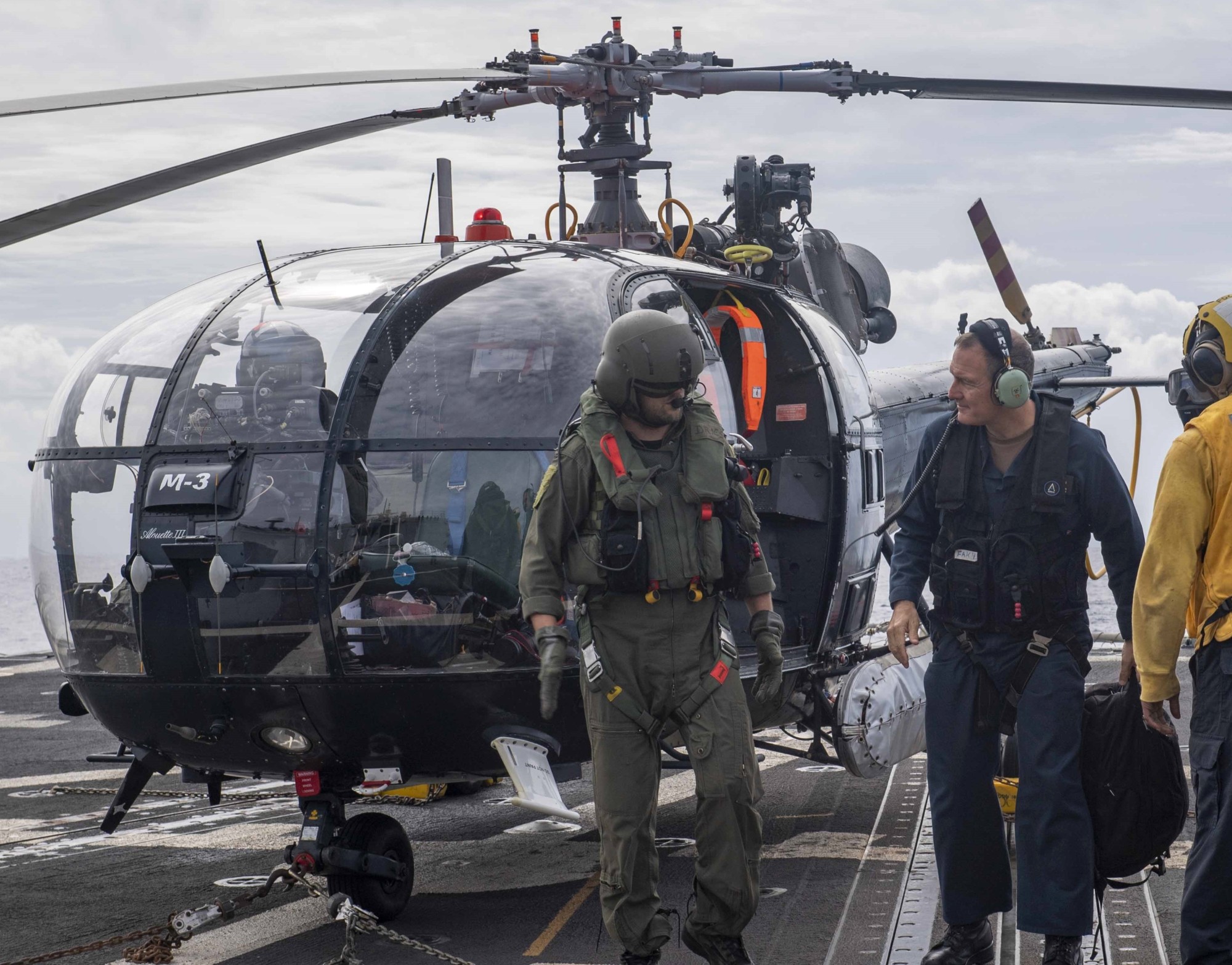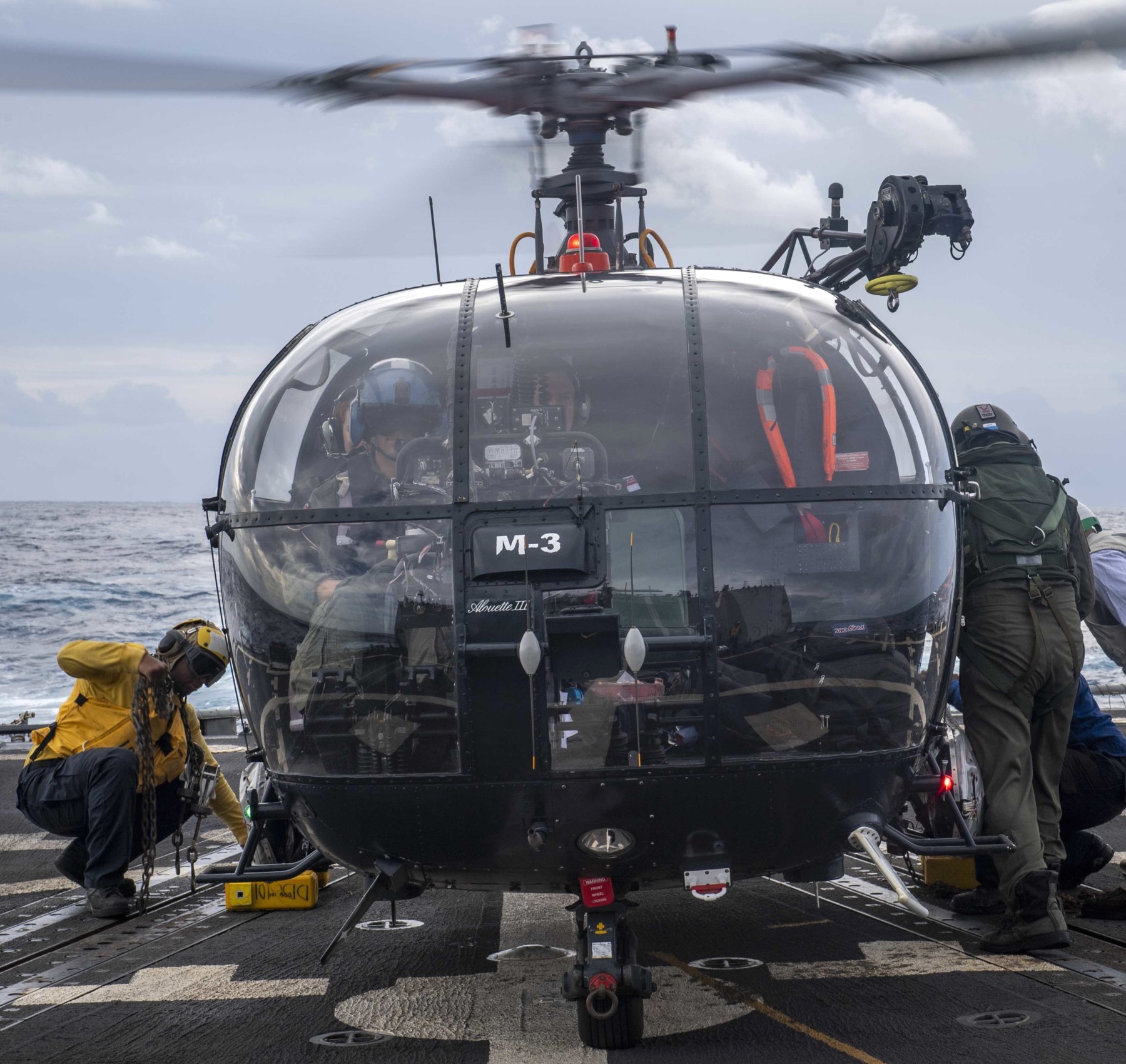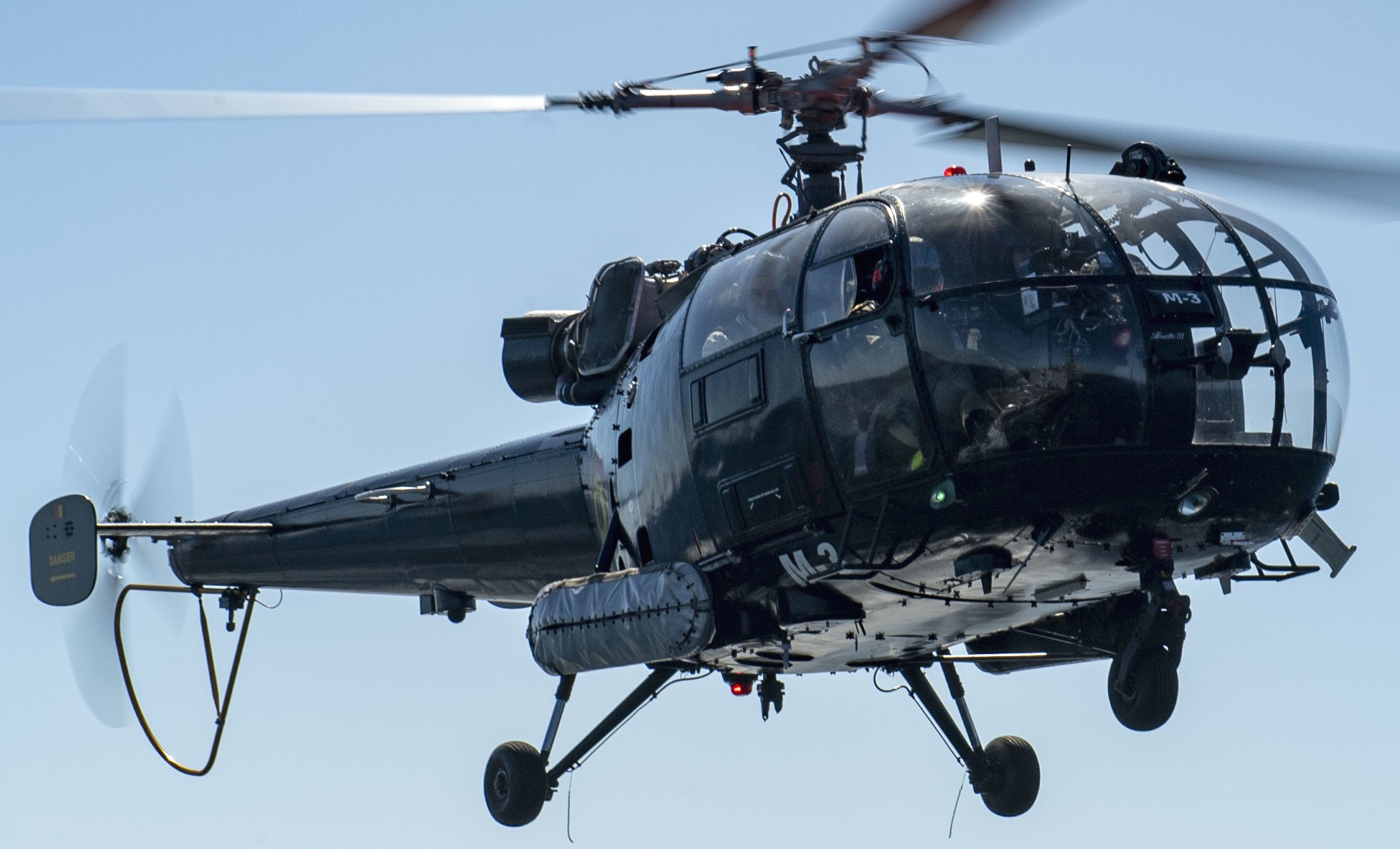 |
|
HOME
|
US Navy -
ships
|
US Navy - air
units
|
USMC - air
units
|
International
Navies
|
Weapon Systems
|
Special Reports |
|
Belgian Armed Forces - Naval Component /
Defensie - Marinecomponent / La Defense - Composante Marine Sud Aviation / Aérospatiale SA 316B Alouette III |
 |
|
Serials / markings: 3 x SA316B M1 / M2 / M3 |
| 11/24 |
|
The Aérospatiale Alouette III (Lark),
company designations SA 316 and SA 319, is a single-engine, light
utility helicopter developed by French aircraft company Sud
Aviation. During its production life, it proved to be a relatively
popular rotorcraft; including multiple licensed manufacturers, in
excess of 2,000 units were constructed. The Alouette III was developed as an enlarged derivative of the earlier and highly successful Alouette II. Sharing many elements with its predecessor while offering an extra pair of seats and other refinements, it quickly became a commercial success amongst both civil and military customers. Further variants were also developed; amongst these was a high-altitude derivative, designated as the SA 315B Lama, entered operational service during July 1971. The Alouette III was principally manufactured by Aérospatiale; the type was also built under licence by Hindustan Aeronautics Limited (HAL) in India as the HAL Chetak, by Industria Aeronautică Română (IAR) in Romania as the IAR 316 and F+W Emmen in Switzerland. Similar to the Alouette II, in military service, it was used to perform missions such as aerial observation, photography, air-sea rescue, liaison, transport and training; it could also be armed with anti-tank missiles, anti-shipping torpedoes, and a fixed cannon. In a civilian capacity, the Alouette III was commonly used for casualty evacuation (often fitted with a pair of external stretcher panniers), crop-spraying, personnel transportation, and for carrying external loads. By the 2010s, many operators were in the process of drawing down their fleets and replacing them with more modern types; the French military intend to replace their Alouette IIIs with the newly-developed Airbus Helicopters H160. The Alouette III has its origins with an earlier helicopter design by French aircraft manufacturer Sud-Est, the SE 3120 Alouette, which, while breaking several helicopter speed and distance records in July 1953, was deemed to have been too complex to be realistic commercial product. Having received financial backing from the French government, which had taken an official interest in the venture, the earlier design was used as a starting point for a new rotorcraft that would harness the newly developed turboshaft engine; only a few years prior, Joseph Szydlowski, the founder of Turbomeca, had successfully managed to develop the Artouste, a 260 hp (190 kW) single shaft turbine engine derived from his Orédon turbine engine. This engine was combined with the revised design to quickly produce a new helicopter, initially known as the SE 3130 Alouette II. During April 1956, the first production Alouette II was completed, becoming the first production turbine-powered helicopter in the world. The innovative light helicopter, soon broke several world records and became a commercial success. As a result of the huge demand for the Alouette II, manufacturer Aérospatiale took a great interest in the development of derivatives, as well as the more general ambition of embarking on further advancement in the field of rotorcraft. In accordance with these goals, the company decided to commit itself to a new development programme with the aim of developing a more powerful helicopter that would be capable of accommodating up to 7 seats or a pair of stretchers. The design team was managed by French aerospace engineer René Mouille. The design produced, which was initially designated as the SE 3160, featured several improvements over the Alouette II; efforts were made to provide for a higher level of external visibility for the pilot as well as for greater aerodynamic efficiency via the adoption of a highly streamlined exterior. SA 316B: powered by a 425 kW (570 shp) Turboméca Artouste IIIB turboshaft engine, with strengthened main and tail rotor for greater performance. The SA 316B was built under licence in India as the HAL Chetak, and again under licence in Romania as the IAR 316. SA 319B: was a direct development of the SA 316B, it was powered with a 649 kW (870 shp) Turbomeca Astazou XIV turbo shaft engine, but it was derated to 447 kW (660 hp). Specifications: Crew: 2 Capacity: 5 passengers Length: 10.03 m (32 ft 10¾ in) Main rotor diameter: 11.02 m (36 ft 1¾ in) Height: 3.00 m (9 ft 10 in) Main rotor area: 95.38 m2 (1026 ft2) Empty weight: 1143 kg (2520 lb) Gross weight: 2200 kg (4850 lb) Maximum speed: 210 km/h (130 mph) Cruising speed: 185 km/h (115 mph) Range: 540 km (335 miles) Service ceiling: 3200 m (10500 ft) Rate of climb: 4.3 m/s (850 ft/min) Three SA 316B Alouette III's were acquired for the Belgian Navy in 1971. Since 2004 the helicopters are integrated into the Belgian Armed Forces Air Component (Air Force) and operated by No. 40 Squadron. The Alouette III helicopters will be phased out in 2021. Units / Serials: M-1 (construction number 1812) / M-2 (cn 1816) / M-3 (cn 1817) source: wikipedia + |
| images |
       |
| | seaforces.org | Belgian Navy start page | |